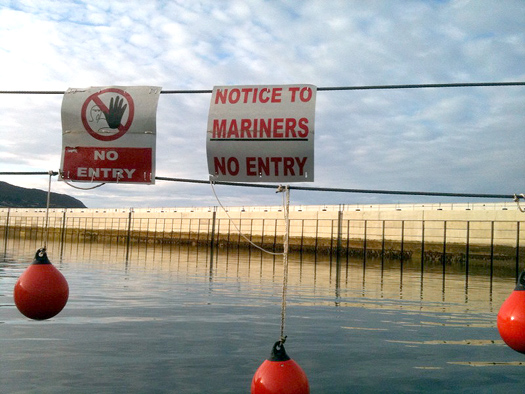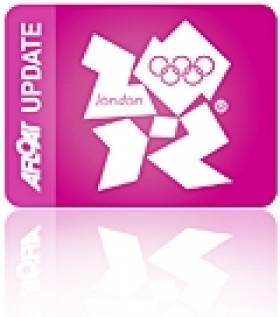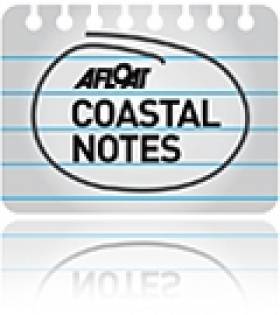Displaying items by tag: controversy
Cork Harbour Incinerator Controversy Reopened
The controversial toxic waste incinerator proposal for Ringaskiddy in Cork Harbour has been re-opened by the decision of Bord Pleanala to look again at the project proposed by the Indaver company.
The latest situation has developed from a High Court decision which quashed previous planning permission for the project because of “objective bias” involving a board member of Bord Pleanala over work done by him for a firm of consultants engaged by Indaver to make submissions to Cork County Council. The Judge ruled that the case should be remitted back to the Bord for further consideration.
The Cork Harbour Alliance for a Safe Environment had sought to have the case dismissed altogether. There has been widespread community opposition throughout Cork Harbour to the project
Bord Pleanala says the issue is not a new application but a “remittal of the previous application for a fresh decision.”
This has been set for May 13.
Indaver has previously described the project as a “waste to energy facility” while Bord Pleanala describes it in a post on their website as a “resource recovery centre — including waste-to-energy facility”.
“It’s an incinerator and a toxic one, in more ways than one,” was the response in Ringaskiddy today as news broke of what local people described as “the reawakening of what we have been fighting for decades.
“Maybe they think they’ll wear us out through age as we’ve been at it a long time, but we’ll fight again. This incinerator is not welcome in our community.”
The latest situation has arisen from a High Court decision which quashed previous planning permission for the project because of “objective bias” involving a board member of Bord Pleanala over work done by him for a firm of consultants engaged by Indaver to make submissions to Cork County Council. The Judge ruled that the case should be remitted back to the Bord for further consideration.
The Cork Harbour Alliance for a Safe Environment had sought to have the case dismissed altogether.
Bord Pleanala says the issue is not a new application but a “remittal of the previous application for a fresh decision.”
This has been set for May 13.
Indaver has said: “We look forward to engaging with the Board on the next step of this planning application process in due course.”
The first planning application for the Indaver project was lodged with Cork County Council in November 2001.
Renewed opposition and more controversy over the project can be expected.
Coastguard Takes Delivery of New Chopper
#COASTGUARD - The Irish Coast Guard has taken delivery of its new search and rescue helicopter at its Shannon base, The Irish Times reports.
As previously reported on Afloat.ie, Sikorsky completed production of the new S-92 helicopter for the Irish Coast Guard last December under the rescue service's €500 million deal with CHC Ireland to revamp the aircraft fleet.
The deal will also see the coastguard's remaining four Sikorsky S-61s replaced by second-hand S-62s from Scotland over the coming months.
Training with crews at Shannon is set to begin shortly ahead of the S-92's first public demonstration at the centenary of the Titanic’s departure from Cobh in Cork Harbour.
Meanwhile, it is expected that the Air Corps may be offered an upgraded air ambulance role, after they were ruled out as contenders for search and rescue work amid some controversy.
The Department of Health has reportedly been in exploratory talks with private firms regarding the provision of an inter-hospital emergency air transfer service, as called for by the Roscommon Hospital Action Group.
The Irish Times has more on the story HERE.
Worrall Thompson Thanks Irish Wife at Fundraiser for 470 Duo
#WORRALL THOMPSON - Celebrity chef Anthony Worrall Thompson - in Dublin at the weekend for a fundraiser for Olympic hopefuls Ger Owens and Scott Flanigan - has credited his Irish wife with being the "rock" that kept him going through his recent shoplifing controversy.
"She is absolutely amazing," he told the Irish Independent of his Dublin-born wife Jacinta Shiel. "We met nearly 20 years ago. She's gorgeous, she's got a great heart and she's my rock."
Worrall Thompson was at Malahide Rugby Club on Saturday to judge a celebrity chef night in aid of the Olympic 470 duo's bid for a spot at the 2012 games, as previously reported on Afloat.ie.
He kept his promise to attend the event following last Monday's public apology for his "stupid and irresponsible actions" after he was caught shoplifting cheese and wine from a Tesco store.
Worrall Thompson also donated his appearance fee from RTÉ's Saturday Night Show to Owens and Flanigan, who require sponsorship to supplement their support their funding from the Irish Saling Association.
NAMA Reviews Further Development of Greystones Harbour
The National Asset Management Agency (NAMA) is currently reviewing plans to continue development of Greystones Harbour, WicklowNews.net reports.
NAMA, which took over the loans connected to the controversial €300 million development, has received Sispar's business plan for developing the proposed public walkway and retail units, as well as amenities for water users, further to proposals outlined in June.

Signs and buoys strung across Greystones harbour to keep mariners out of the new basin
It is expected that the limited development could be completed by September next year, pending NAMA approval. The agency is set to announce its decision next month.
WicklowNews.net has more on the story HERE.
Haughey's Celtic Mist: A Stormy History
The Irish Independent today recounts the tumultuous history of the Celtic Mist - the yacht once owned by the late former Taoiseach Charles Haughey that recently took part in the Tall Ships Races has now begun a new life as a research vessel with the Irish Whale and Dolphin Group (IWDG).
"But as the boat continues to ride the waves off the west coast of Ireland it will forever be associated with the shenanigans of 'Champagne Charlie'," writes John Costello.
Though controversial for many - from its purchase in 1987 and its subsequent lavish outfitting to the extravagance of the lobster and vintage wine that were always available on board - there are also fond memories, particularly in Dingle, where Haughey helped to transform the harbour.
And who can forget the time when Loyalist terrorists threatened to blow up the yacht in a bid to avenge the death of Lord Mountbatten?
The Irish Independent has more on the Celtic Mist's storied past HERE.
Corrib Pipeline Go-Ahead Rests With Energy Minister
Energy Minister Eamon Ryan will issue a decision "in the coming weeks" on Shell Ireland's plans to complete the Corrib gas pipeline, The Irish Times reports.
The news follows yesterday's ruling by An Bord Pleanála which approved revised plans final section of the controversial pipeline.
Shell also requires licencing from Minsiter for the Environment John Gormley and the Environmental Protection Agency (EPA) for the completion of the pipeline under the conservation area of Sruwaddacon esturary to Shell's Ballinaboy gas terminal.
It would be a further two years before the pipeline is fully operational.
An Bord Pleanála's Inspector Martin Nolan commented that the "clarity and transparency" of Shell's revised application gave "confidence that the safety of the public is fully protected".
However planning was only approved with 58 conditions related to the construction and management of the 8.3km pipeline - including extra security at the landfall valve at Glengad, which has raised the ire of local residents at last year's oral hearings.
The Irish Times has more on the story HERE.

































































